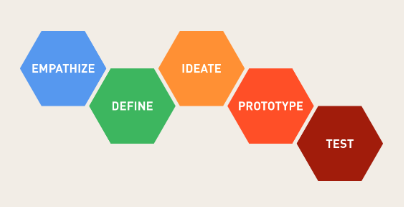
Roller Coaster Challenge

Overview
Students will design a fun and safe roller coaster with at least one loop. Students start by simulating a coaster with Amusement Park Physics. Here they learn about giving their coaster the maximum energy needed to complete the course. Their coaster design is rated for safety and fun. After simulating a coaster and understanding how to design a safe and fun coaster, students use the design process to create a prototype coaster for an amusement park.
This activity will take multiple class periods.
Learning Objectives
Students will:
-
Be able to demonstrate their knowledge of potential and kinetic energy by designing a coaster with at least one loop for an amusement park.
-
Be able to use the design thinking process to create a coaster, prototype their coaster, and provide feedback to peer designers.
Vocabulary
Vocabulary Words:
- Potential Energy: Potential energy is the stored energy an object has because of its position or state.
- Kinetic Energy: Kinetic energy is energy in motion.
Pre-planning
To prepare for this lesson:
-
Teachers should teach this lesson while students learn about Newton’s Laws of Motion.
-
Students should have an idea about potential and kinetic energy.
-
Preplanning:
-
Prepare methods for designing a coaster. Students can choose to design a coaster digitally or draw their coaster.
-
Prepare prototype materials. Students will need building materials to design a model of their coaster. This could be play dough, popsicle sticks, pipe cleaners, construction paper, hot wheels tracks, etc.
-
-
Introduce students to the design process using this video
-
Show the students this image for the design process:

Accommodations
See the Accommodations Page and Charts on the 21things4students website in the Teacher Resources.
Steps
Directions for this activity:
-
Introduce students to the design process using this video.
-
Tell students that they will be creating a Roller Coaster for a local theme park. The theme park is struggling to bring 5th graders in and they need a new attraction to do so. The coaster must have one loop and be both safe and fun. After they come up with their design, they will have to present their design to the theme park. They will start with a simulation to understand potential and kinetic energy, and also learn what makes a coaster safe and fun. Have students pair up and simulate a coaster using this website.
-
The teachers should check in with each pair of students and make sure they are reading and understanding what makes a coaster both safe and fun. They are defining the problem that the theme park is facing and what they need to do to solve the problem. When they receive a “thumbs up” for both of their ratings, they may begin the ideate step of the design process.
-
Partnerships then come up with ideas to make their coaster. They can draw or digitally create their coaster and must remember to include the elements that keep the coaster both safe and fun.
-
Once they have designed their coaster, students will build a prototype using the design materials already prepared.
-
To “test” their prototype, students can record themselves, take pictures, or actually test their coaster. They should be able to explain why their coaster is both safe and fun. If their test coaster fails, students should revisit their design and adjust to solve the problem.
-
Students decide how to “present” their coaster to the theme park. They can use a variety of tools to do so. Teachers can give the choice of:
-
Videoing the coaster working or a ride simulation.
-
Use Google Slides to sell their coaster, with pictures of what makes it safe and fun.
-
Pretend they are a student who just rode the coaster and write what the student may have experienced using Google Docs.
-
Assessment Options
Different options for assessing the students:
- Observations
- Check for understanding
MITECS COMPETENCIES & ISTE STANDARDS
MITECS: Michigan adopted the "ISTE Standards for Students" called MITECS (Michigan Integrated Technology Competencies for Students) in 2018.
Innovative Designer
4a. Students know and use a deliberate design process for generating ideas, testing theories, creating innovative artifacts or solving authentic problems.
4c. Students develop, test and refine prototypes as part of a cyclical design process.
Devices and Resources
Device: PC, Chromebook, Mac, iPad
Browser: Chrome, Safari, Firefox, Edge, ALL
App, Extension, or Add-on:
Websites:
Design Thinking Process
Park Physics Coaster
CONTENT AREA RESOURCES
Science
NGSS: 3-5-ETS1-2 Generate and compare multiple possible solutions to a problem based on how well each is likely to meet the criteria and constraints of the problem.
3-5-ETS1-3 Plan and carry out fair tests in which variables are controlled and failure points are considered to identify aspects of a model or prototype that can be improved.
GLCE’s:
P.FM.05.21: Distinguish between contact forces and non-contact forces.
P.FM.05.22: Demonstrate contact and non-contact forces to change the motion of an object.
Credits
This task card was created by Lacey Kohn, KRESA, January 2019. Updated October 2023.


